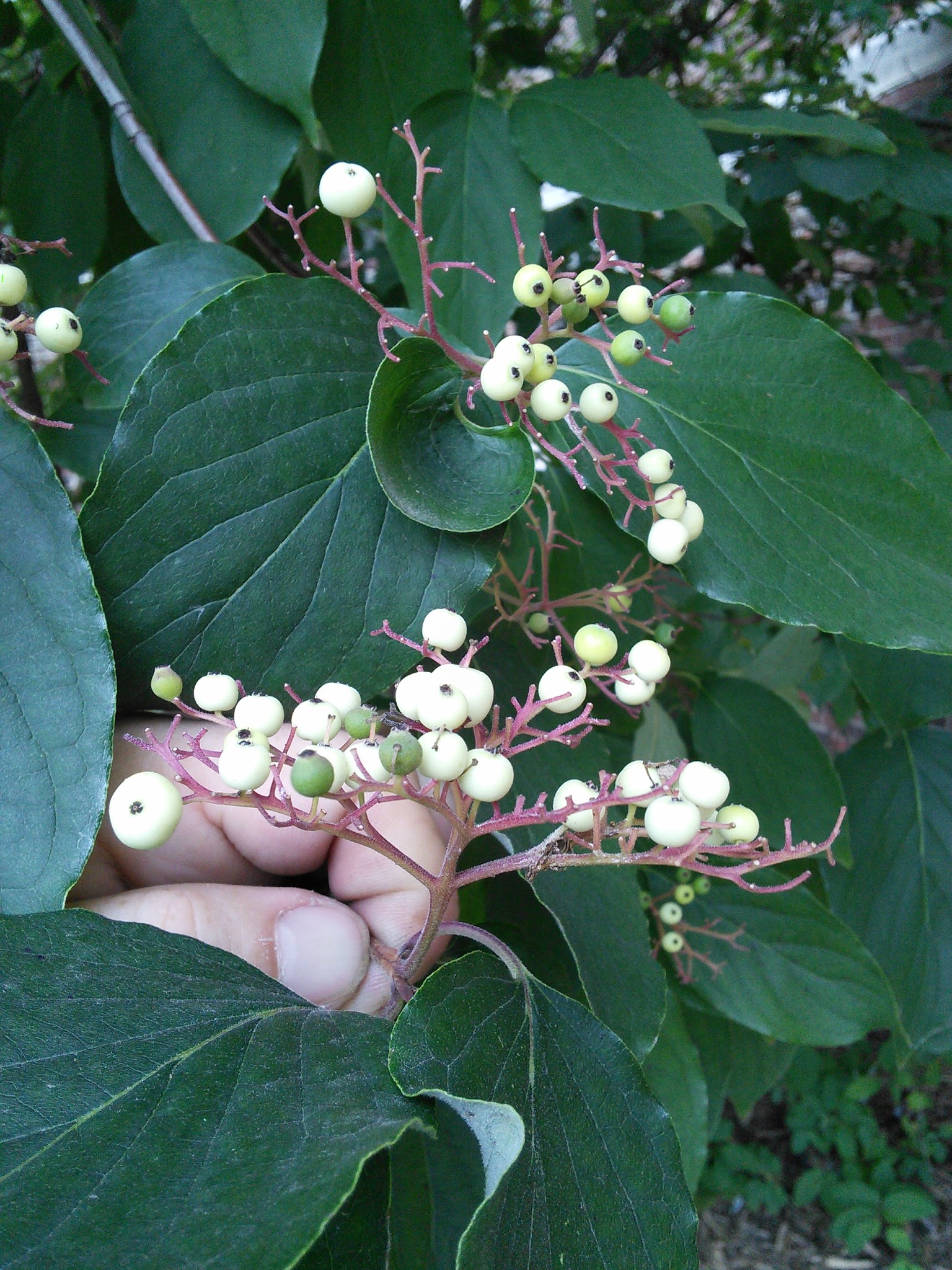Common Name: gray dogwood
Scientific Name:
Family: Cornaceae
Genus: Cornus
Species: racemosa
Hardiness Zone: 4 to 8
Height: 10 to 15 ft
Width: 10 to 15 ft
Common Characteristics:
Gray dogwood is an adaptable, native multi-stemmed shrub that is excellent for naturalizing areas. It is a slow-growing shrub where the younger stems are a reddish color and the older stems are gray-brown. The leaves are simple with an opposite arrangement, elliptic or lance-shaped, and are two to four inches long. They are a grayish-green color that turns purple-red in the fall and sometimes can be showy. White flower racemes bloom in late spring and don't have the most pleasant fragrance. The flowers give way to bluish-white berries that ripen from July to October and can persist into winter. The terminal stems of the flowers are red, providing a distinct contrast to the cluster of berries once the leaves have dropped in the fall.
Where it Grows:
Gray dogwood grows best in disturbed woods or moist well-drained soil along streams, wet meadows, and prairie margins. This shrub tolerates any type of light exposure and dry soil. It also tolerates occasional drought, occasional flooding, and city air pollutants.
How it's Used:
Gray dogwood can be planted in groups or left alone to spread in naturalized areas or native plant gardens. It is also effective in shrub borders or near buildings.
Ecosystem Services:
Hundreds of species of birds are highly attracted to the berries and are quickly eaten by them. Birds also use this shrub for shelter and a nesting site.
Where it is Native to:
Gray dogwood is native to the eastern region of North America.
Problems:
There are no serious insect or disease problems. Root suckering and dense thickets can be an issue if pruning and maintenance don't occur habitually.
References:
